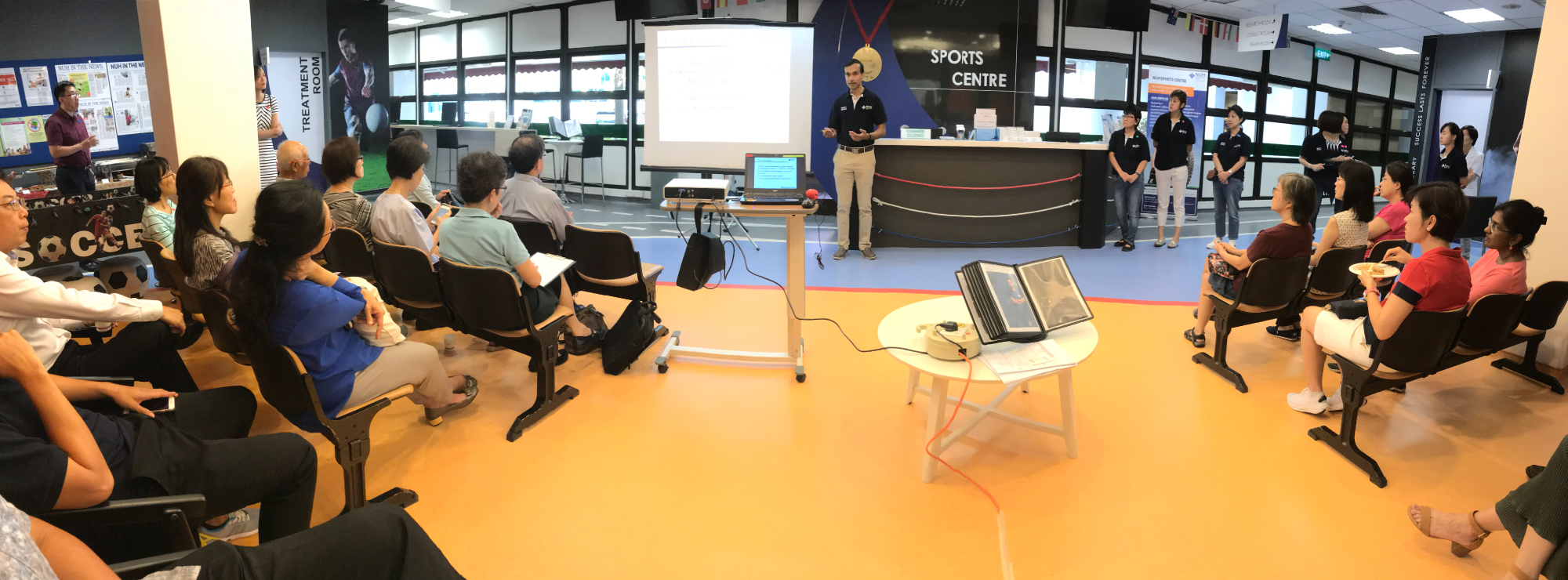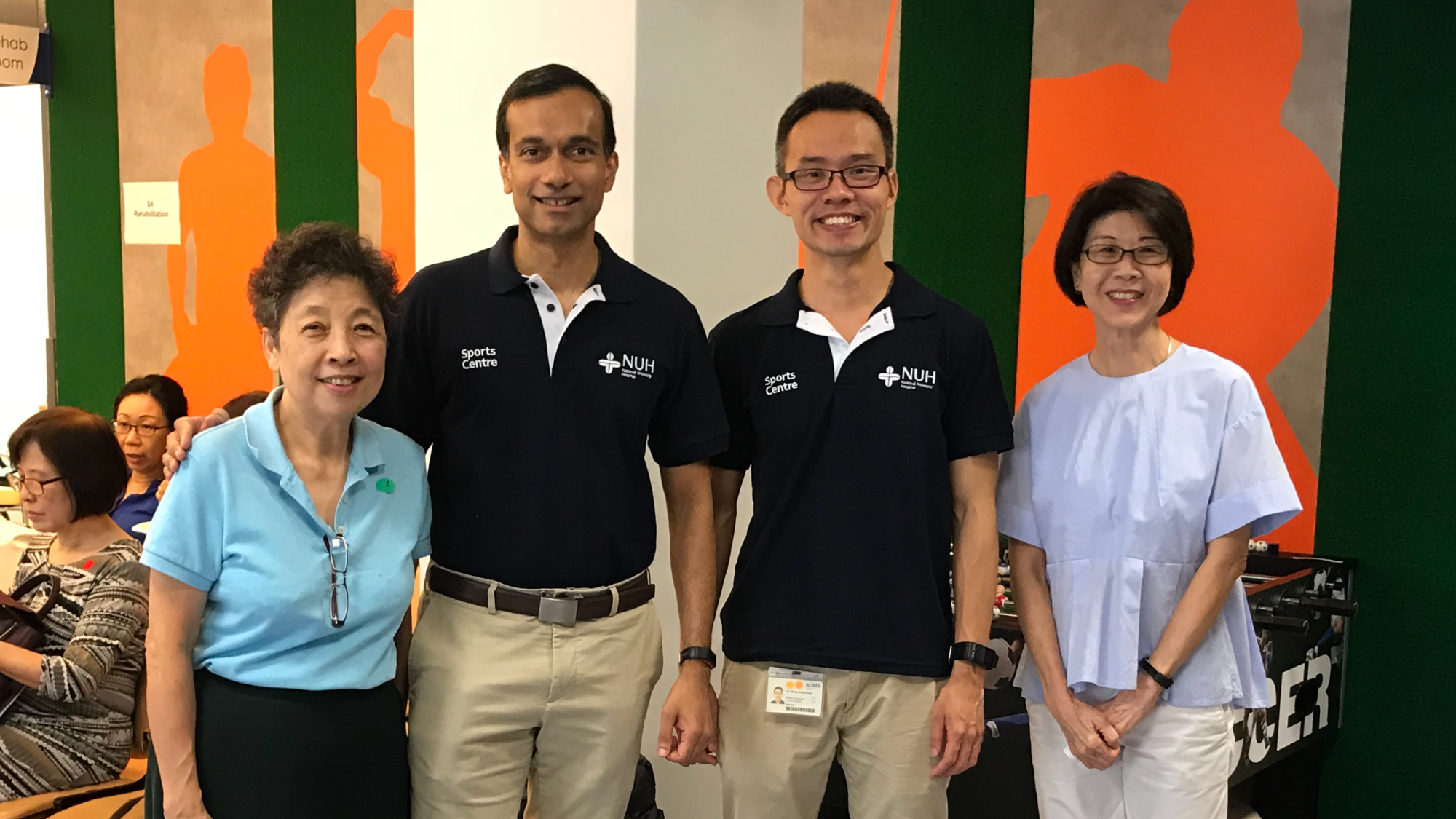Running Highs and Lows: Going Beyond The Treatment of Symptoms
By Dr Wang Mingchang, Associate Consultant, Family and Sports Physician and
Dr Lingaraj Krishna, Senior Consultant Orthopaedic Surgeon and Director, NUH Sports Centre
More Singaporeans are signing up for mass-participation sports events, specifically running. The annual Standard Chartered Singapore Marathon has seen an exponential increase in the number of runners from just 6,000 in 2002 to almost 50,000 in 2017. The recently-concluded Army Half Marathon involved more than 40,000 runners, compared to 15,000 during its first inception more than two decades ago.
Runners who ramp up their training in the lead-up to the event may suffer overuse injuries of the lower limb. This is common in novice runners who increase their mileage too quickly and subject their weight-bearing joints, such as the knee and ankle, to increased stresses. The human body is actually pretty adaptable. Given sufficient rest, structures such as muscles, bone and tendons are able to recover and become stronger to cope with increased load demands.
It is when runners do not rest enough and continue training that overuse injuries occur. Common examples of running-related overuse injuries include plantar fasciopathy, which is heel pain due to trauma to the plantar fascia, a thick band which originates from the heel bone and extends to the toes. Another common injury is patellofemoral pain syndrome (commonly known as “runner’s knee”), which is pain over the kneecap due to cartilage irritation.
Most runners experience an improvement in symptoms with rest and/or cutting back on their mileage. However, for some, the pain persists or recurs when they try to increase their mileage to pre-injury levels. This is despite getting adequate rest. Such cases are usually due to suboptimal biomechanics of running.
Running biomechanics refer to our running posture, gait and the way our joints, especially that of our lower limbs, interact when we move. For example, having an excessively “knocked-knee” gait when running predisposes towards abnormal knee cap movements, as well as increased flattening of the arch in our feet. This can result in problems like patellofemoral pain syndrome and plantar fasciopathy.

Dr Krishna (middle) giving an introduction to general practitioners (GPs) on the services available at the NUH Sports Centre.
The way our feet impact the ground when running also contributes to overuse injury. Taking larger strides and landing on our heels results in increased ground reaction forces. This in turn results in greater forces transmitted to the shin bones and knee joints, causing problems like stress injuries to the shin bones (commonly known as “shin splints”) and patellofemoral pain syndrome respectively.
One also needs to ensure that one’s running shoes are well-cushioned and appropriate for one’s foot type (e.g. flat foot, neutral or high arch). Shoes which lack cushioning support and do not conform to one’s foot type may result in increased stress to the feet and lower limbs, resulting in repetitive strain injury.
Runners can seek help from physiotherapists to address faulty running biomechanics. Physiotherapists are trained to assess running gait and muscle strength, specifically those of the hip and lower limbs. They can identify biomechanical and strength deficits, thereafter prescribing specific therapeutic exercises to correct them. Commonly prescribed exercises for runners include hip, buttock and core muscle strengthening. Such exercises help reduce the degree of “knock-knees” when running, which in turn reduces abnormal knee and feet movements and prevent the onset or worsening of overuse injury. Many runners are aware of the need to stretch tight muscles to prevent injury but unfortunately, not many recognise the value of doing core and hip strengthening.

Dr Krishna and Dr Wang with two GPs at a recent GP Continuing Medical Education event.
Physiotherapists are also excellent at gait analysis. As part of the biomechanical assessment, they may do a video recording of the patient running on a treadmill. The recording is played back at slow speed and various parameters are analysed, one of which is footstrike pattern and stride length. A runner who presents with bilateral knee or shin pain may be seen to run with large strides and a heelstrike pattern. This runner may be put through a process of “gait-retraining”. This teaches him/her to land more on the midfoot and to reduce the length of his/her strides. This reduces the ground reaction force and can help ameliorate knee or shin pain.
Runners are advised to change their shoes after every 500 to 800km of use. The shoe may still appear structurally intact but in reality, the cushioning in the midsole would have lost most of its shock-absorption capabilities. Continued use will result in more ground reaction forces absorbed by the runner, contributing to overuse injury. There are also different shoes for different foot types. If you are flat-footed or have low arches, you may be more prone to conditions such as plantar fasciopathy. Be sure to wear the appropriate shoe for your foot type. If you have difficulty determining your
foot type and need footwear advice, an option would be to visit a running specialty store which usually has knowledgeable staff who can do a basic foot assessment. If you need more detailed assessments and perhaps customised insoles, we suggest consulting a podiatrist instead.
In summary, preventing lower limb overuse injuries in running is important to ensure continued enjoyment of this universally accessible sport. It is prudent to gradually increase one’s mileage and ensure adequate rest in between training sessions. One also needs to understand the importance of optimising running biomechanics and proper footwear in preventing injuries too.
The NUH Sports Centre is an integrated multi-disciplinary Centre that focuses on the management of sports-related injuries. Backed by a dedicated, skilled and experienced multidisciplinary team, the NUH Sports Centre offers the entire spectrum of sports-related clinical services.
